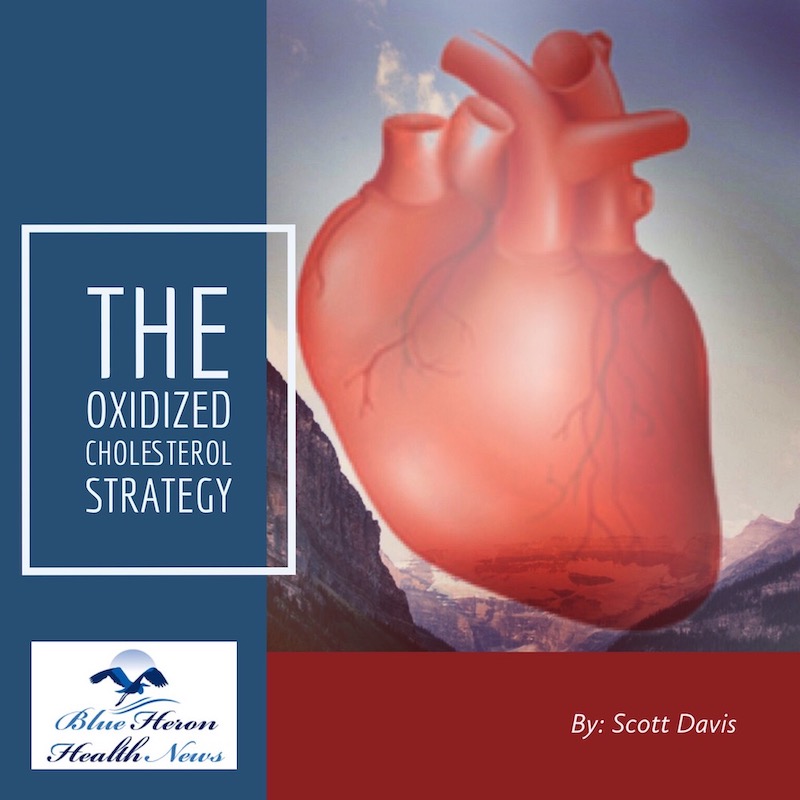
The Oxidized Cholesterol Strategy™ By Scott Davis The Oxidized Cholesterol Strategy is a well-researched program that reveals little known secret on how to tackle cholesterol plaque. This program will tell you step by step instructions on what you need to completely clean plaque buildup in your arteries so as to drop your cholesterol to healthy level.
What are the potential effects of oxidized cholesterol on eye health?
Oxidized cholesterol, particularly oxidized LDL (oxLDL), can have significant negative effects on eye health, contributing to the development of several eye-related conditions. Oxidative stress and the presence of oxidized cholesterol are linked to various ocular diseases, particularly those involving the retina and blood vessels in the eye. Here are the potential effects of oxidized cholesterol on eye health:
1. Age-Related Macular Degeneration (AMD)
- Oxidized cholesterol and AMD: One of the most significant effects of oxidized cholesterol is its contribution to the development and progression of age-related macular degeneration (AMD). AMD is a leading cause of vision loss in older adults and affects the macula, the central part of the retina responsible for sharp, detailed vision.
- Drusen formation: Oxidized cholesterol has been found to accumulate in drusen, which are yellow deposits under the retina often observed in patients with early-stage AMD. These deposits contain cholesterol and other cellular debris, contributing to inflammation and damage to the retinal cells.
- Retinal cell damage: OxLDL can induce inflammation and oxidative stress in retinal cells, leading to cell death and degeneration in the macula. This process reduces the ability of the macula to function properly, impairing central vision.
2. Retinal Inflammation
- Pro-inflammatory effects: Oxidized cholesterol triggers inflammation in the blood vessels and tissues of the eye, including the retina. Chronic inflammation in the retina can lead to tissue damage and the progression of diseases like AMD and diabetic retinopathy.
- Immune response: The immune system recognizes oxidized LDL as harmful, leading to the recruitment of immune cells like macrophages to the retina. These cells engulf oxLDL, forming foam cells, which contribute to inflammation and retinal damage.
3. Atherosclerosis and Retinal Blood Vessels
- Vascular damage in the eye: Oxidized cholesterol contributes to the development of atherosclerosis (hardening and narrowing of the arteries) throughout the body, including the small blood vessels in the eye. Retinal blood vessels can become narrowed or damaged by atherosclerotic plaque buildup, leading to reduced blood flow and oxygen supply to the retina.
- Retinal vein occlusion: The buildup of oxidized cholesterol in the retinal blood vessels can increase the risk of retinal vein occlusion, a condition where a vein in the retina becomes blocked. This can cause sudden vision loss, swelling, and bleeding in the retina.
4. Diabetic Retinopathy
- Role of oxLDL in diabetes-related eye damage: Oxidized cholesterol may worsen the complications of diabetic retinopathy, a condition in which high blood sugar levels damage the blood vessels in the retina. OxLDL promotes inflammation and oxidative stress, which further contribute to the damage of retinal blood vessels, exacerbating vision problems in people with diabetes.
- Increased permeability of blood vessels: Oxidized cholesterol can damage the blood-retinal barrier, increasing the permeability of blood vessels and allowing fluid or blood to leak into the retina. This leakage can lead to retinal swelling (macular edema), a key feature of diabetic retinopathy.
5. Glaucoma
- Oxidized cholesterol and glaucoma: There is emerging evidence that oxidized cholesterol may play a role in the development of glaucoma, particularly the more common form known as open-angle glaucoma. Glaucoma is a condition where elevated pressure in the eye damages the optic nerve, leading to vision loss.
- Impaired drainage and blood flow: OxLDL may contribute to reduced blood flow and oxidative stress in the optic nerve and trabecular meshwork (the drainage system of the eye). This can impair the drainage of aqueous humor (the fluid in the eye), leading to increased intraocular pressure, which is a major risk factor for glaucoma.
6. Cataracts
- Oxidative damage to the lens: The lens of the eye is particularly vulnerable to oxidative stress, and oxidized cholesterol may contribute to the formation of cataracts, a condition where the lens becomes cloudy and impairs vision.
- Protein aggregation in the lens: Oxidative stress caused by oxLDL can lead to the aggregation of proteins in the lens, which reduces its transparency and flexibility. This process is a major factor in cataract development, especially in aging individuals.
7. Choroidal Neovascularization (CNV)
- Abnormal blood vessel growth: Oxidized cholesterol is associated with the development of choroidal neovascularization (CNV), a condition where abnormal blood vessels grow beneath the retina. CNV is a key feature of the “wet” form of AMD and can lead to severe vision loss due to bleeding and fluid leakage under the retina.
- Vascular endothelial growth factor (VEGF): OxLDL can stimulate the release of VEGF, a molecule that promotes the growth of new, often leaky blood vessels. These abnormal vessels contribute to vision loss and retinal damage in conditions like wet AMD.
8. Compromised Eye Immune System
- Dysregulation of the immune response: Oxidized cholesterol can dysregulate the immune system in the eye, leading to inappropriate immune responses that damage retinal cells and tissues. Chronic oxidative stress and inflammation caused by oxLDL can impair the eye’s ability to repair itself, increasing the risk of degenerative diseases.
Conclusion
Oxidized cholesterol can have detrimental effects on eye health by contributing to oxidative stress, inflammation, and vascular damage within the eye. It plays a significant role in the development of age-related macular degeneration (AMD), diabetic retinopathy, glaucoma, and cataracts, as well as in the overall health of the retinal blood vessels. Reducing oxidative stress and preventing cholesterol oxidation through a healthy diet, regular exercise, and managing risk factors like high cholesterol and blood pressure can help protect the eyes and maintain vision health.
The Oxidized Cholesterol Strategy™ By Scott Davis The Oxidized Cholesterol Strategy is a well-researched program that reveals little known secret on how to tackle cholesterol plaque. This program will tell you step by step instructions on what you need to completely clean plaque buildup in your arteries so as to drop your cholesterol to healthy level.
